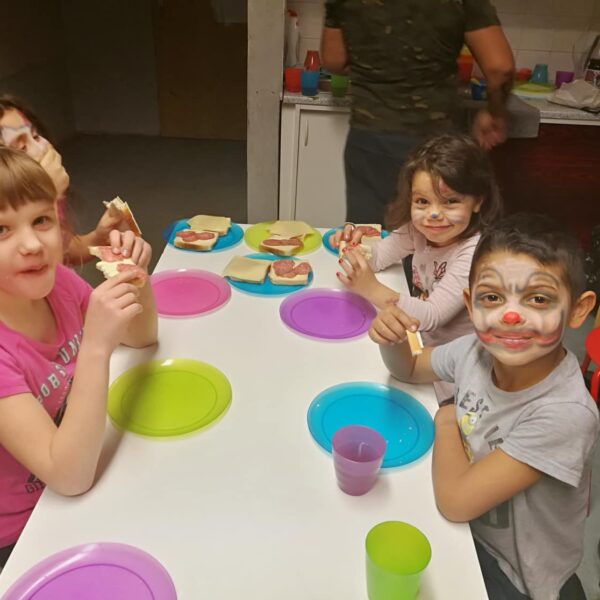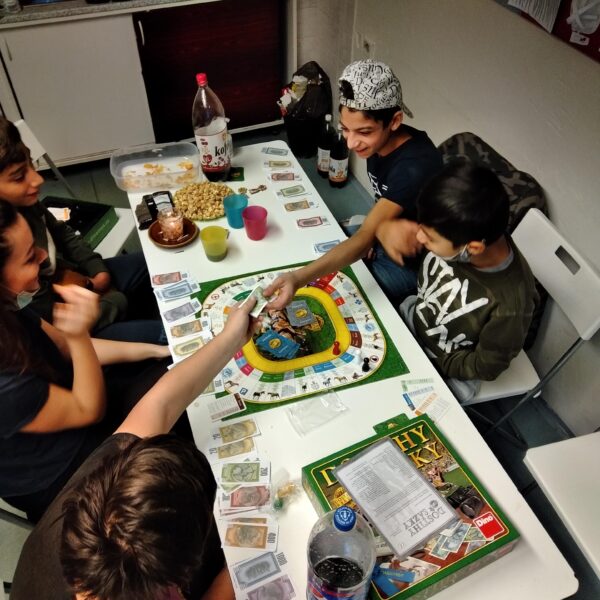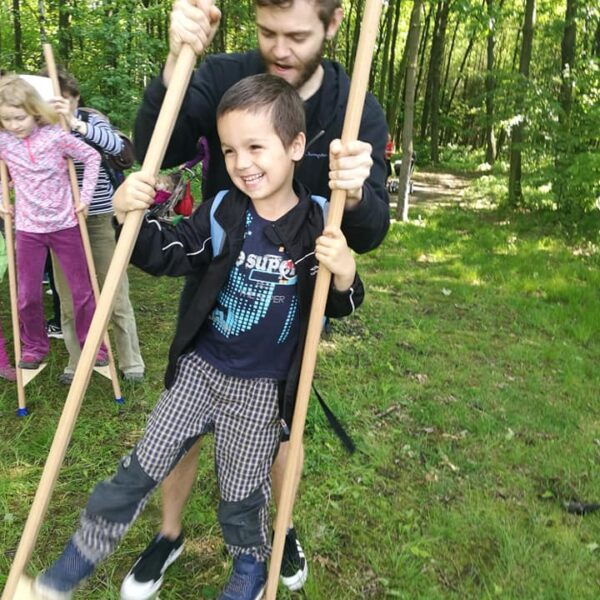
The building houses up to 450 inhabitants, with living spaces are usually 1 or 2 rooms in a dormitory style. Among the elderly, those struggling with addiction, post-institutional life or other issues stemming from poverty are also families, some of whom are otherwise unable to get a lease on a regular flat due to low income or discrimination in housing practices in the region. These families often live with many people in one or two rooms with a kitchen corner. Some of our children come from families that live up to 10 members in such rooms.
Children living in this type of mixed population social housing face a range of issues at home ranging from non-functional families, parents dealing with the stresses of debt, unemployment, and fear of eviction, addictions, as well as the negative effects of peer pressure from different groups. At school they are often faced with social and racial bias. These children are most often not able to access enrichment activities, and they are left without stimulation or attention both at school and at home.
From the team:
Of course, there are many organisations that run centers and clubhouses where children can find free-time activities. I dare say that our club is exceptional and unique for several reasons.
We are the only club that works with children directly where they live- the residential hostel.
The children can easily access the club, including the younger ones. They feel safe there, and feel that the club is theirs - part of their extended home.
At the very beginning of the project we asked the children what they wanted most from the club. We thought they would answer that they wanted films or video games or other recreational things, yet we were truly surprised by their answer. A large number told us that they wanted the club to be quiet, warm, orderly. We understood that these are the qualities they don’t often have at home. After the volunteers worked the the kids for some time and the project began in full, we asked them what they would like to call their club, and they responded “We’ve Got What it Takes”. It was clear to us that the activities and time in the club was giving them greater and greater confidence, and desire to learn and try new things.


